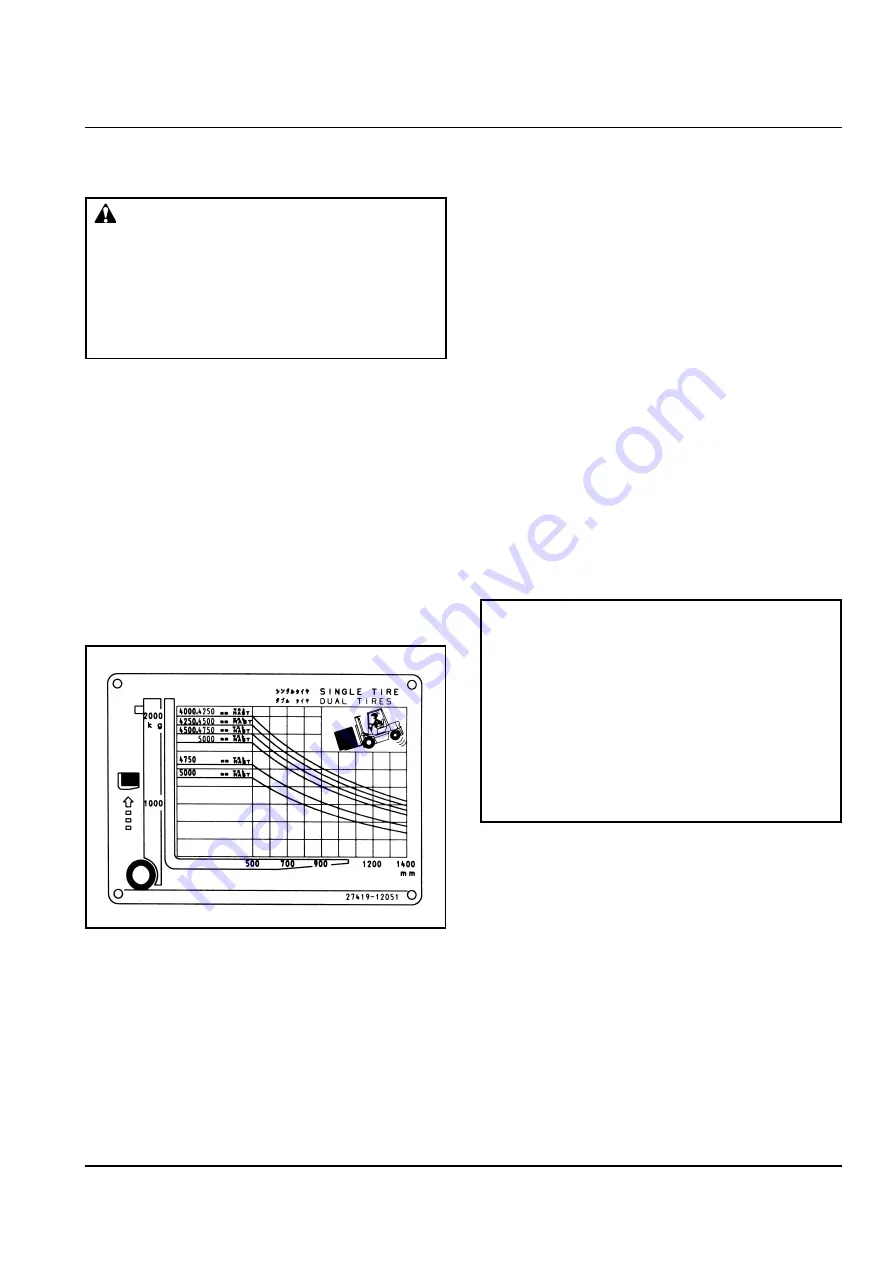
BASIC LOAD CENTER AND RATED
LOAD
CAUTION
When traveling with loads, keep the forks
•
15 to 20 cm (6 to 8 in.) above the ground
surface and keep the mast tilted back fully.
The allowable load of a truck equipped with
•
an attachment is reduced in comparison
with that of the standard truck.
If the truck is equipped with a load-handling means
such as hinged forks, load grab, or rotating clamp,
its allowable load will be reduced as compared
with that of the standard truck (a truck without any
attachment) for the following reasons:
Never exceed the allowable load indicated
on the load chart attached onto the truck or
attachment.
Reasons for a reduction in the allowable load:
1) The weight of an attachment is added.
2) The attachment shifts the basic load center
position forward, and thus the allowable load is
reduced.
The basic load center is the distance from the front
face of the forks to the load’s center of gravity. The
chart given above shows the relationship between
the basic load center and the weight of loads to be
allowable for the 2-ton truck. This chart is called a
load chart and is attached to the truck.
STABILITY OF LIFT TRUCK
The stability of lift trucks is stipulated in JIS
(Japanese Industrial Standards) or in other national
industrial standards, and UniCarriers lift trucks are
manufactured complying with these standards.
However, note that the stability of lift trucks is not
assured at all times, but only when the following
conditions are properly observed.
The ground or floor surface is level and hard.
•
The truck travels under standard loaded or
•
unloaded condition.
The truck is operated carefully and the forks
•
are properly manipulated; that is, the forks
are not tilted forward more than vertical, when
stacking or unstacking.
Load handling is carried out carefully and
slowly.
In addition, keep the truck in good working condition
for safe operation and traveling.
Standard unloaded condition
This means that the forks are raised 30 cm (12
in.) above the ground or floor surface and tilted
back fully without loads.
Standard loaded condition
This means that the forks are raised 30 cm (12
in.) above the ground or floor surface with a load
placed at the basic load center position of the
forks.
USING INCHING PEDAL
The inching pedal works in the same manner as the
clutch pedal of the truck
, with mannal transmission.
Use the inching pedal to move the truck inch by
inch while operating the load handling means at
high speed.
1) Press the inching pedal to the floor.
2) Place the shift lever into the forward (or reverse)
position.
3) Step on the accelerator pedal gradually while
releasing the inching pedal little by little, to
move the truck inch by inch.
3-3
PROPER OPERATION
Summary of Contents for FD20 Series
Page 51: ...MEMO...
Page 91: ...MEMO...
Page 139: ...MEMO...
Page 156: ...CONTENTS 0 9 6 2 A E 6 2 E L 6 3 L R 6 4 R U 6 5 6 1 6 INDEX...







































